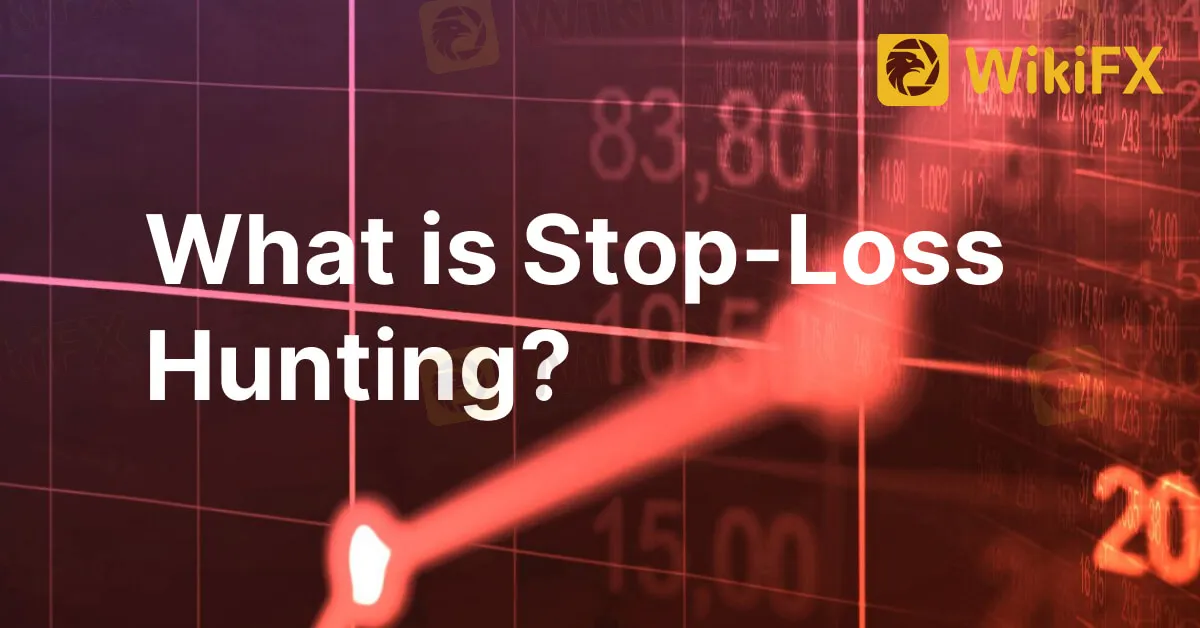简体中文
繁體中文
English
Pусский
日本語
ภาษาไทย
Tiếng Việt
Bahasa Indonesia
Español
हिन्दी
Filippiiniläinen
Français
Deutsch
Português
Türkçe
한국어
العربية
What is Stop-Loss Hunting?
Abstract:Stop loss hunting is a term often used in the financial markets to describe a particular market action where traders' stop loss orders get triggered, causing them to exit their positions.

Stop loss hunting is a term often used in the financial markets to describe a particular market action where traders' stop loss orders get triggered, causing them to exit their positions. While some traders may use this term in an exaggerated manner when things do not go their way, stop loss hunting is a real phenomenon that exists as a counterparty risk in the financial markets. It is essential for traders to understand this concept precisely to avoid its dangers and apply their knowledge to their trading strategies and risk management of open positions.
However, not all market movements occur because of stop loss hunting, and it is crucial for traders to understand its reasoning and mechanics. The practice of stop loss hunting and its evidence often remains a matter of opinion as liquidity providers are obligated to provide tradable prices but not move them in a smooth incremental manner. It is similar to gravity in that you cannot see it, but you know it is there.
Stop loss hunting is usually attributed to the largest financial institutions, including major brokers, dedicated market-making liquidity providers, and speculators. There are several complex reasons why a market suddenly moves through a technical price level, but it is not always intended to target an individual client with a stop-loss order. Large financial powers may have enough cash to cause an imbalance in the marketplace and momentarily push a market price to a level where many stops are likely to be placed and, therefore, triggered by the move.
Stop-loss hunting is undertaken to knock active positions out of the marketplace and can weaken support and resistance levels that have established themselves as key resistance points. Market makers may use this practice to generate profits and protect their active positions against developing trends. Forex and commodities are two of the more active asset classes affected by stop-loss hunting, but it also occurs in other assets where derivatives allow long and short positions.
Stop losses are used by many types of speculators, including day traders, to risk manage their positions against sudden reversals of trends. If a day trader is using a stop loss as protection, they may choose a technical indicator level that has displayed durable support or resistance within a certain timeframe.
The broad financial markets are awash with stop losses, and institutions via large brokerages are well aware of potential accumulation points, even without seeing the brokers order book, as they have a fair idea where client stop losses are likely to be placed. Brokerage firms that act as market makers and are caught with a trading position that is not balanced may have the incentive to eliminate positions to create financial safety for their institution. However, such practices can generate unwarranted apprehension among small traders. Nonetheless, brokers with a significant institutional presence can theoretically undertake a stop-loss hunting expedition, and some may resort to such practices when deemed necessary.

Disclaimer:
The views in this article only represent the author's personal views, and do not constitute investment advice on this platform. This platform does not guarantee the accuracy, completeness and timeliness of the information in the article, and will not be liable for any loss caused by the use of or reliance on the information in the article.
Read more

What Makes Cross-Border Payments Easier Than Ever?
Cross-border payments are now faster, cheaper, and simpler! Explore fintech, blockchain, and smart solutions to overcome costs, delays, and global payment hurdles.

Many Social Media 'Investment Gurus' Are Scammers Preying on Malaysian Traders
Social media platforms have become breeding grounds for scammers posing as investment gurus, exploiting the growing interest in forex and cryptocurrency trading among Malaysians. Fraudulent "financial experts" often create the illusion of legitimacy by offering enticing stock analyses and promises of high returns.

Why Even the Highly Educated Fall Victim to Investment Scams?
Understanding why educated individuals fall victim to scams serves as a stark reminder for all traders to remain vigilant, exercise due diligence, and keep emotions firmly in check.

Beware of Deepfake 'Experts' and Fake Apps: Protecting Yourself from Trading Scams
In recent years, the rise of deepfake technology and sophisticated online exploitation tactics have led to a dangerous surge in share-trading frauds. Cybercriminals have evolved their methods to deceive even the most cautious investors, making it increasingly challenging for individuals to discern genuine opportunities from scams.
WikiFX Broker
Latest News
What Makes Cross-Border Payments Easier Than Ever?
Trader Exposes Unethical Practices by STP Trading
Italian Regulator Warns Against 5 Websites
Currency Calculator


